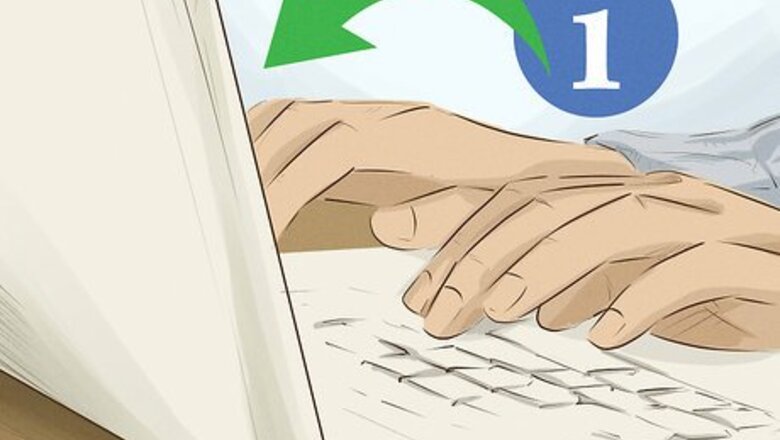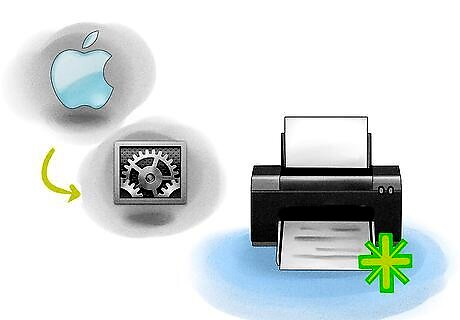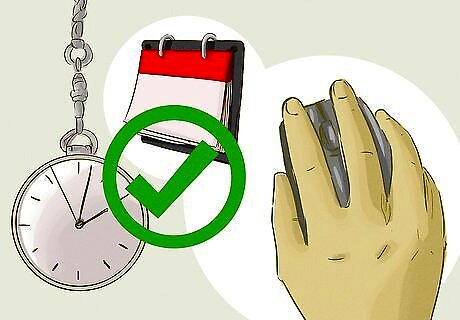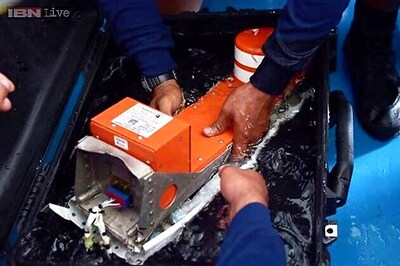
views
X
Research source
Registering Online

Determine the procedures set in place by your state. The registration process is pretty simple across the board, but varies in minor ways across the Union. There is no universally-accepted, federal registration form—you’ll have to interface with your state’s own, separate web portal in order to register. This makes specific instruction more difficult, but state-by-state help exists. Luckily, the U.S. Government has built a website to point you in the right direction. Even heading to the Democratic National Committee’s website doesn’t provide any appropriate links, unfortunately. It will, however, provide you with a wealth of information once you’re good and registered! Every state doesn’t have an online registration form yet. Currently, only 23 states support online registration. Typical requirements of registration are U.S. citizenship (natural born or naturalized), being 18 years old on election day, and not having been declared mentally incompetent by a court of law. Some states also revoke the voting rights of convicted felons.

Go to USA.gov/register-to-vote. In the first section, shortly down the page, click on the rectangular, red button that reads “Register to Vote.”

Select your state from the drop-down menu. After choosing, a pop-up should inform you whether your state supports online registration. For those with online registration, clicking the button will take you to the site. In selecting Georgia, for example, we’re informed that the state supports online registration and has its own website set up for that purpose. In selecting Florida, we’re instead presented with a graphic detailing a three-step mail-in process. For states requiring mail-in forms, you’ll click the button to download the form, then follow all subsequent instructions for mailing it in. If you don’t have a printer, they’re often available for use at your local public library. In selecting New Hampshire, we’ll be dealing with a state that does not support online registration or recognize the National Mail Voter Registration Form. Instead, we must register in person at our local election office. Clicking the button in the window will provide a list to help us determine where the most convenient office is.

Verify your identity online, and provide all necessary information on your state’s site. That site might require a driver’s license number alongside other identifying information, such as name, address, and social security number. The requirements of each state vary, though options will be provided by the site should you lack the appropriate documentation. Read the instructions and follow all successive steps, and before you know it you’ll be registered! Make sure you specify “democratic” as your party affiliation. That’s what we’re here for, after all.

Await your voter registration card. Once registration has been completed, be patient. Voter I.D. cards can as many as 5-7 weeks to arrive. You do not actually need a voter registration card to vote, regardless of what you may have heard elsewhere. You only need to be sure that you're registered, and know the county in which you're registered to vote. If your voter registration card never comes, you'll want to call your voting office and ensure you're registered. You can also request that they re-send your card. 36 states have passed laws requiring photo I.D. to vote, however. You should check with your state's identification requirements before heading to your polling place on election day.

Re-register to vote as a democrat. If you’ve previously registered to vote, registering as a democrat is essentially the same process. Many registration forms will have the option to specify that you’re already registered, and are simply changing or updating information. Just make sure to check the box, fill in the field, or bubble the bubble for party affiliation so that it says “democratic.”
Registering as a Democrat in States Which Lack Online Registration

Contact your local election office if you live in New Hampshire, Wyoming, or North Dakota. These three states do not recognize the National Mail Voter Registration Form, a general mail-in registration form recognized by all other states. As such, you’ll have to follow procedures specific to your state; your election office will be able to guide you through this process. Follow this link to USA.gov’s online portal. Although you won’t be able to register online, selecting your state from the dropdown menu will provide you with the necessary information to locate your local election office. You’ll also need to go through your local election office if you live in a U.S. territory, e.g. Puerto Rico.

Access the National Mail Voter Registration Form. On the landing page you’ll see several links, offering downloads of the form in English, Spanish, Chinese, Japanese, Tagalog, Korean, and Vietnamese. Select the appropriate language.

Print the form. If you don’t have easy access to a printer, you can use them at public libraries (sometimes for a small fee) or at business which offers copying services, such as Fedex Office (formerly Kinko’s).

Fill in all required information. Ensure that you read the instructions thoroughly, and provide all necessary information. Even if you’re already registered to vote and would simply like to join the democratic party, you might be required to totally complete the form. You will be required to provide your name, date of birth, and address. If you live in a rural area and do not have an address or street number, however, a map is available to allow you to draw a diagram of where you live. A few states will ask for your driver's license number. If you do not have one, however, filling in "none" is acceptable. Some states will require your social security number; this will be specified in the state-specific instructions.

Pay special attention to box 7. This is what it’s all for! Box 7 is where you’ll write you party affiliation. In legible print, write “Democratic” in the empty field. Once you've completed the rest of the form, make sure to sign your name.

Mail the form without delay! The cut-off dates for registration leading up to elections differ for every state. Consult the last several pages of the document to find your state; all relevant dates should be laid out for you in this section. It takes an average of one to three days for Priority Mail to arrive at its destination, so don’t procrastinate if you’re edging up to that deadline. The mailing address is also in the state instructions (the last several pages of the document).

Await your voter registration card. Voter I.D. cards can as many as 5-7 weeks to arrive, after your form has been received and processed. More reason not to procrastinate! You do not actually need a voter registration card to vote, regardless of what you may hear elsewhere. You only need to be sure that you're registered, and know the county in which you're registered to vote. If your voter registration card never comes, call your voting office to ensure that you're registered. You can also request that they re-send your card. 36 states have passed laws requiring photo I.D. to vote, however. You should check with your state's identification requirements before heading to your polling place on election day.




















Comments
0 comment